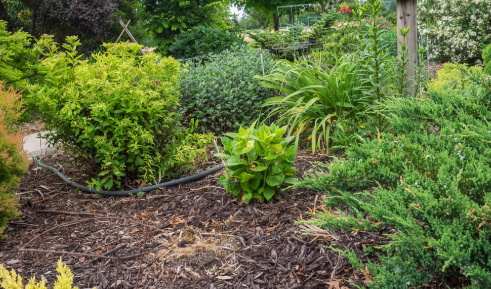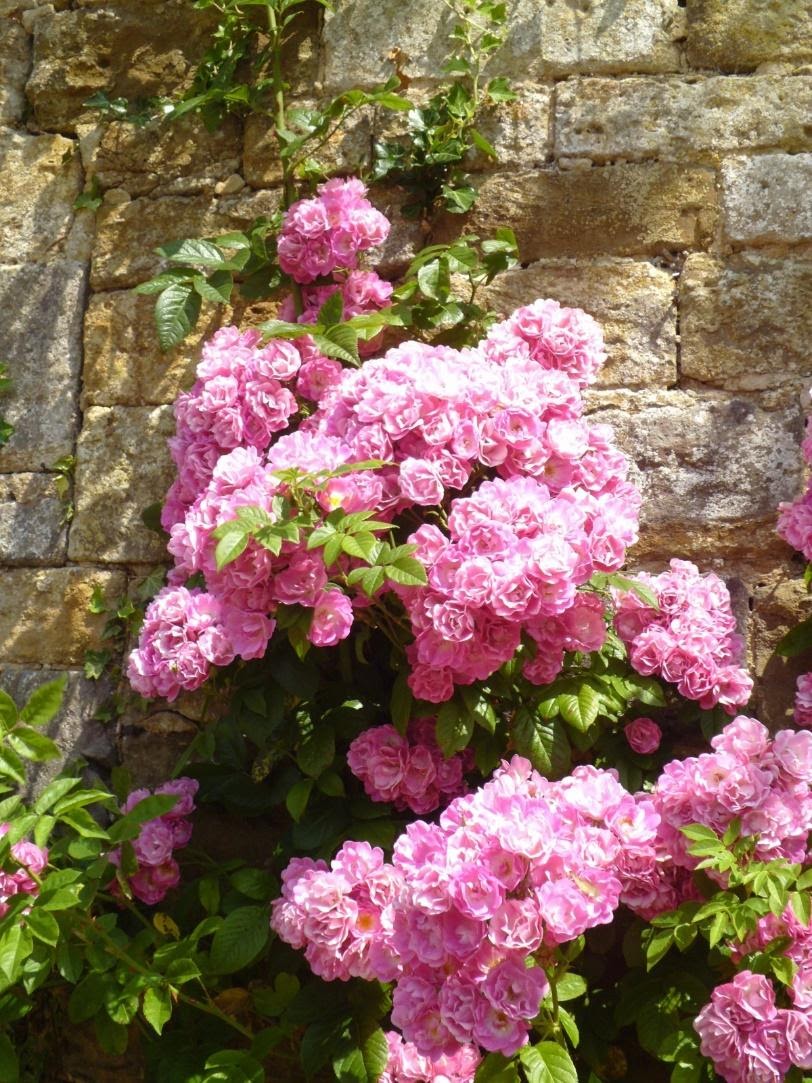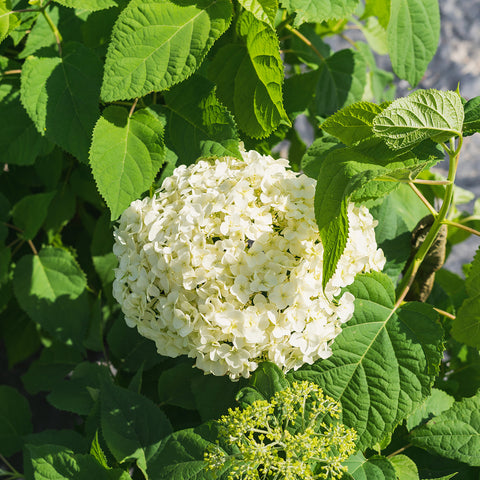Why Are My Hydrangeas Not Blooming?
Once bloomed, the hydrangea plant is one of the most beautiful flowers to have in any garden. The hydrangea plant is very common to southern and eastern Asian (mostly Korea, China, and Japan) and American landscapes, with different species and varieties growing across the globe. Most hydrangea plants are between 3-10 feet tall, but others exist in the form of trees and liana vines. The beautiful flowering shrub is used in weddings for décor and bouquets, it is almost a must-have for any garden. Sometimes there is a problem with hydrangeas and blooming. Find out why hydrangeas are not blooming in this blog.
Shop Hydrangea Bushes

Is your hydrangea not blooming?
Disappointed that you don’t have any hydrangea flowers blooming? Fret not! There’s a couple of things you can do to fix this in no time.It is probably because your plant has not begun flowering yet. There are a couple of things that you can look into to figure out why your plant isn’t blooming any flowers – some factors which you will be able to fix in no time and others which might be well beyond your control. It can be frustrating when your hydrangea plant doesn’t have any blossomed flowers to show off, but there is always a reason behind it.
Don’t be sad – not just yet!
Your job is to figure out what it is, and hopefully, you will be confident about what to do once you’re finishing reading this!
 Hydrangea without flowers.
Hydrangea without flowers.
Hydrangea Facts:

- Hydrangea Variety: There are several varieties of the hydrangea plant, and you will need to figure out which one you have. Here at the nursery, we have the Penny Mac Hydrangea, Oakleaf Hydrangea, and Limelight Hydrangea which are all different types of hydrangeas. Each variety has a different hydrangea color.
- Plant Hardiness: Before struggling more, check the plant hardiness zone that the region you live in belongs to. This will help you assess if you the specific category of hydrangea that you own can grow flowers in the geographic, climatic and physical conditions that you have to offer. Often the cause for being unable to enjoy flower blooms on your hydrangea plant can be having a particular variety or species that can’t grow where you live. Certain hydrangea plants can only flower off old wood and others only grow them on new wood. The former category usually does not pose problems, but knowing which category you own is key to getting to the bottom of why your hydrangea isn’t blooming.
- Bloom Time: Hydrangea bloom time varies by variety. Typically these shrubs will produce their flower heads in winter or early spring to have a spring bloom.
 Hydrangea plant that has managed to bloom properly.
Hydrangea plant that has managed to bloom properly.
How to Prune Hydrangeas:
 Pruning hydrangea. Another one of the most common reasons why your hydrangea plant is not growing flowers is because it was pruned at the wrong time. Some hydrangea plants will start forming buds for their flowers in early summer, which is an entire year before they start blooming.
Pruning hydrangea. Another one of the most common reasons why your hydrangea plant is not growing flowers is because it was pruned at the wrong time. Some hydrangea plants will start forming buds for their flowers in early summer, which is an entire year before they start blooming.Such categories include the French hydrangea called ‘hydrangea macrophylla’ and lace-caps which are scientifically referred to as ‘hydrangea macrophylla normalis’. As mentioned earlier, knowing whether your hydrangea blooms on new growth or old wood is key information so that you can perform cuttings at the right time.
Pruning your Old Wood Hydrangea
Notice for example, if you have an ‘old wood’ hydrangea that withers away and falters to the ground, then it will not grow back next spring. It is because it can’t grow flowers on new wood, and it is currently trying to develop new wood. This category of hydrangea will only show flowers once the wood is old enough (typically 1-2 years). So, for instance, the stems/stalks which are old right now are where you will see flowers next year if the right conditions are met. You may remove dead or dying branches, as well as diseased branches at any time.Over-Pruning in Hydrangeas
Often, over-pruning can result in hydrangea plants delaying their display of flowers. Undoubtedly, pruning hydrangeas is key to keeping your plant in staying healthy, looking fresh and growing large flowers. However, if done at the incorrect time, improper pruning may delay the flower blooming process. If you have old-wood hydrangea, then you should consider pruning after flowers start to fade away so that the plant has time to recover and makes a return with even larger blooms on the old wood the following season. Hydrangea macrophylla.
Hydrangea macrophylla.
Pruning Hydrangea in Fall – DON’T DO IT!
If it is currently fall season, then it is recommended to not prune your buds into the ground. This is a common mistake that destroys the flower buds for the next season. The solution is to prune your hydrangea plant when you can see the dead wood, which will most likely be in early to mid-spring.Additional Hydrangea Pruning Tips
- Make sure that you have the technical skills to perform pruning.
- Another tip is to keep track of your plant’s cycle so you know when the last time that your hydrangea died was. This will help you decide whether or not you need to keep the previous years wood to allow beautiful blooms.
Keep a Check on the Weather Conditions
 Frost covered hydrangea. Frost may be one of the reasons that your hydrangea plant isn’t erupting with beautifully blossoming flowers. The hydrangea plant (certain species more than others) are extremely sensitive to temperature and weather conditions. A late spring freeze may mean no flowers for that season. Even if the buds from last summer are disturbed by frost, it may mean no more flowers in the current growing season.
Frost covered hydrangea. Frost may be one of the reasons that your hydrangea plant isn’t erupting with beautifully blossoming flowers. The hydrangea plant (certain species more than others) are extremely sensitive to temperature and weather conditions. A late spring freeze may mean no flowers for that season. Even if the buds from last summer are disturbed by frost, it may mean no more flowers in the current growing season.Hydrangeas prefer morning sun and afternoon shaded areas. The farther north you live the more hours of sun your hydrangea shrub needs to produce blooms and healthy leaves.
Cages and Enclosures for Hydrangeas
One of the ways you can protect your hydrangeas from this is by taking precautionary measures for the winter temperatures. Several gardeners will form cages/enclosures for in-ground hydrangea using stakes or chicken wire. All your effort for winter protection will lead to lush flower blossoms the following season. It really is worth it!Hydrangea Fertilizer: Maintain Healthy Soil
Less Nitrogen, more Phosphorus!While nitrogen is a key component for plants including hydrangea to be able to grow, too much of it can pose a problem like fertilizer burn. Plants need nitrogen compounds in fertilizers so that they can trap in sunlight and create protein structures such as amino acids which are building blocks for the plant. So you might have hydrangea plants with big green leaves and no flowers heads at all if you have too much nitrogen. Phosphorus is more essential for the buds to be able to blossom. Slow release fertilizers are best.
- Make sure that the excess fertilizers from your lawn aren’t being washed up near your hydrangeas or blown towards them by the wind.
- Additionally, be mindful of your choice of fertilizer so that it includes appropriate amounts of both nitrogen and phosphorus.
- Hydrangeas prefer moist soils that will insulate their growing root systems. Acidic soils are best so be sure to test your soil pH.
- These acid loving plants could use a boost from organic fertilizers such as used coffee grounds at the base of the plant.
The Bottom Line:
 Colorful and beautiful Hydrangeas can instantly add life to your garden or any occasion. Whether you are growing hydrangeas in your domestic lawn or growing them for retail purposes, it is best to be prepared for the best bloom. If you are struggling with stubborn hydrangeas that are not blooming, the above mentioned tips can be very helpful in solving the problem. Pay close attention to pruning time, pruning practices, weather conditions and species of hydrangea to identify the issue and resolve it efficiently. We are pretty sure that you will finally be able to get hydrangea bloom after following this article. They are easy to grow… have fun!
Colorful and beautiful Hydrangeas can instantly add life to your garden or any occasion. Whether you are growing hydrangeas in your domestic lawn or growing them for retail purposes, it is best to be prepared for the best bloom. If you are struggling with stubborn hydrangeas that are not blooming, the above mentioned tips can be very helpful in solving the problem. Pay close attention to pruning time, pruning practices, weather conditions and species of hydrangea to identify the issue and resolve it efficiently. We are pretty sure that you will finally be able to get hydrangea bloom after following this article. They are easy to grow… have fun!
Check out the Hydrangea Grow Guide for more information on growing these flowering shrubs!





























